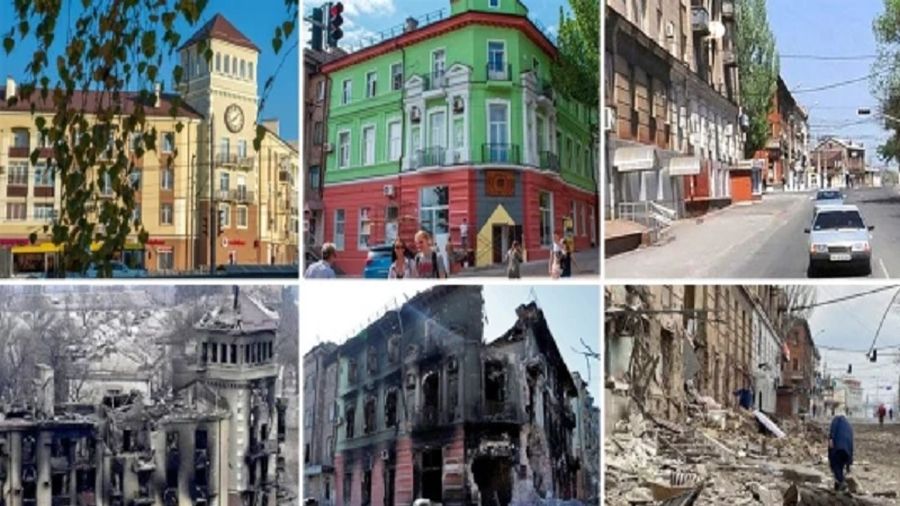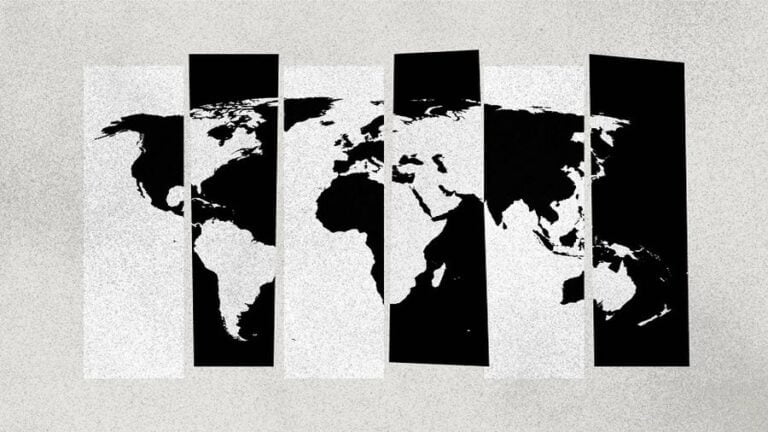The Battle of Mariupol Was Bloody But Strategically Beneficial for Russia
This city’s liberation is truly a game-changer in the conflict, which is why President Putin told Defense Minister Shoigu that “I want everyone (who participated in this battle) to know that they are all heroes for us and for all of Russia.”
Russian Defense Minister Shoigu’s announcement on Thursday that the Russian Armed Forces (RAF) have liberated all of Mariupol except for the Azovstal steel plant in which some Neo-Nazis remain marks the end of the most famous battle thus far of Russia’s ongoing special military operation in Ukraine. The country’s top military official explained the city’s destruction by telling President Putin that “In their resistance efforts, the nationalists used almost all residential buildings as fortified emplacements. Armoured vehicles and artillery were placed on ground floors, and snipers took up positions on upper floors. There were separate units armed with ATGMs as well. The residents were brought to the middle floors and basements and used as human shields. It was done in almost every block of flats.”
Nevertheless, Shoigu also reaffirmed that “While liberating Mariupol, the Russian army and the people’s militia units from the DPR took every precaution to save civilian lives.” He then proceeded to explain these efforts in detail and the number of people that were saved. Considering the battle’s de facto conclusion, the Defense Minister advised President Putin to call off the planned storming of the Azovstal steel plant, which the Russian leader agreed to in order to not put his servicemen’s lives at any further risk. Instead, he ordered that the site be completely sealed off and those within it once again offered the chance to surrender, promising that they’ll receive proper medical care as needed and be treated in line with international law.
This milestone in the Ukrainian Conflict is a perfect occasion to reflect on the Battle of Mariupol, which prompted an intense US-led Western Mainstream Media (MSM) infowar against Russia. This city isn’t just some random one on the shores of the Azov Sea, but is the headquarters of the infamous Neo-Nazi Azov Battalion. That explains why Shoigu briefed President Putin that “A large amount of heavy weaponry and military hardware have been deployed in the city, including tanks, the Smerch and Uragan multiple rocket launcher systems, heavy artillery systems and the Tochka-U missile complexes…The city has been stocked with missiles, munitions, fuel and lubricants, and food provisions for lengthy hostilities.” Accordingly, large numbers of foreign mercenaries also reportedly flocked there.
Mariupol’s liberation by the RAF and their Donbass allies marks a turning point in Russia’s efforts to denazify Ukraine, which is among one of the most important objectives of its special operation. The Azov Battalion couldn’t surrender the city without fighting to the very end since their loss of control over it represents the beginning of the end of their Western-backed ethno–fascist nationwide movement. There are two other reasons why they fought so fiercely and in complete violation of the international laws regulating warfare other than the symbolic one, and that’s due to the city’s geo-economic and geostrategic significance. The Azovstal steel plant is a major economic engine that could rejuvenate the region after the conflict finally ends.
The Azov Battalion and their joint Western-Kiev patrons didn’t want the liberated locals to utilize it after the battle was over. At all costs, they couldn’t hand Russia and its allies what they regard as an economic victory but which is simply allowing the locals to rebuild their economy and that of the broader region. That’s why they’ve wanted the RAF and their allies to storm the site in an epic final battle that would probably result in its complete destruction, which President Putin wisely decided against. Regardless of the physical future of the Azovstal steel plant, there’s no denying that the vast majority of Mariupol has been destroyed due to the Azov Battalion using almost all residential buildings as fortified emplacements exactly as Shoigu said.
This too was done with retributive geo-economic motives in mind but also served the supplementary purpose of fueling their Western partners’ anti-Russian infowar. That was done by spreading fake news alleging that the RAF were carrying out a so-called “genocide” in the city, falsely accusing them of indiscriminately destroying all residential buildings as part of some “collective punishment” against the population. The reason for propagating this weaponized narrative was to discredit Moscow’s humanitarian aims in the conflict by misportraying them as hypocritical seeing as how one of the reasons why it intervened was to stop Kiev’s genocide of the indigenous Russian people of Donbass. It was also meant to imbue Kiev’s Western partners with a sense of urgency to send it more weapons.
The US has been demanding that its European vassals “do more” to help its proxy war against Russia in Ukraine despite this being completely counterproductive to the bloc’s objective interests. Knowing their hyper-liberal leanings, however, America cunningly realized that it could manipulate them into complying by pushing this false “genocide” narrative. Those governments that continued to defy its pressure risked having the US encourage some of their citizens to stage a proto-Color Revolution to put additional bottom-up pressure upon them to complement America’s top-down pressure. Put another way, this aspect of the US’ anti-Russian infowar aimed to facilitate its reassertion of hegemony over the EU by manufacturing the false optics that would coerce those targeted states into doing its bidding.
Having explained the soft power and geo-economic dimensions of the Battle of Mariupol, it’s now time to discuss the geostrategic ones that served as the greatest motivation for Kiev demanding that the Azov Battalion fight to the very end after inflicting the greatest amount of damage onto their city. This part of Lenin’s unnatural mini-empire is generally considered to be Russian-friendly if not outright pro-Russian. Its people participated in the newly recognized Donetsk People’s Republic’s (DPR) independence referendum in 2014 but were quickly occupied by Kiev’s forces and their Neo-Nazi allies for nearly the past eight years. There was no doubt that they’d support reuniting with the DPR that could in turn facilitate Russia’s speculative plans to establish a so-called “land corridor” to Crimea.
About that scenario, it’s long been thought by foreign observers that Russia would ideally prefer to have such a corridor if at all possible, which actually indeed ended up transpiring in practice following the RAF’s rapid gains all along Southern Ukraine in the early days of the special operation. Mariupol remained the only holdout, from where the Azov Battalion’s Neo-Nazis could have utilized their stockpiled arms to launch devastating counterattacks from behind the lines. That’s the military-strategic reason why the RAF focused so intensely on liberating this city apart from the soft power and geo-economic motivations that were earlier explained. In connection with this, that’s also why Kiev ordered the Azov Battalion to fight until the very end and cause as much damage to the city as possible.
The Azov Battalion’s loss of Mariupol following its liberation by the RAF and their Donbass allies represents a turning point in the Southern-Eastern theater of this conflict. The “land bridge” with Crimea is now secure, and there’s speculation that nearby parts of rump Ukraine might soon hold their own independence referendums following Crimea and Donbass’ examples that could realistically result in them either being recognized by Moscow as sovereign states or perhaps merging with the Donbass Republics to advance the so-called “Novorossiya Project”. In any case, it’s practically a fait accompli at this point that Kiev will probably never regain sovereignty over this former part of Ukraine ever again. That seemingly inevitable outcome will geopolitically revolutionize this corner of Europe.
It’s for these reasons why the Battle of Mariupol can be described as bloody but strategically beneficial for Russia. The civilian casualties are entirely attributable to the Azov Battalion violating international law by using residential buildings as fortified emplacements and employing a policy of human shields. This city’s liberation is truly a game-changer in the conflict, which is why President Putin told Shoigu that “I want everyone (who participated in this battle) to know that they are all heroes for us and for all of Russia.” Those servicemen sacrificed so much in order to ensure that the human rights of the local population will never again be viciously violated by Kiev’s Neo-Nazis. The glorious victory that their struggle achieved for their proud civilization-state will forever be remembered by their compatriots.







